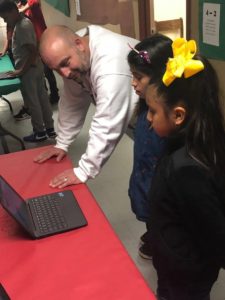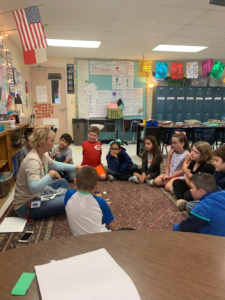By Sharon Kebschull Barrett, May 15, 2020
Part 3 of 3; read part 1 and part 2
At Travis Elementary in Mineral Wells Independent School District in Texas, “we have made some big strides over the past three years, and I 100 percent directly credit that to Opportunity Culture®,” Principal David Wells said.
In student learning gains, Wells cites the number of students reaching the “passing standard” of the STAAR (State of Texas Assessments of Academic Readiness). He also looks at the performance gap between his school, with about 80 percent of students classified as low-income, and the Texas state average.

Wells cites these statistics:
—Travis Elementary has seen a 13.6 percent increase in the number of students reaching the “passing standard” in reading, a 9 percent increase in math, and an 8 percent increase in writing.
—It continues to close in on the state average, narrowing its performance gap with the state from 22 percentage points to 11 in reading, from 6 to 1 percentage points in math, and from 28 to 22 percentage points in writing.
—The school has also seen dramatic reductions in discipline referrals, Wells said: It went from 714 referrals the year before Opportunity Culture® implementation to 391 in the first year, 259 the second year, and was expecting no more than 154 this year when we talked pre-COVID shutdown—a 79 percent reduction.

“I think discipline referrals have changed because we are a huge part of making sure there’s not downtime, which leads to discipline issues, and avoiding frustration or boredom in students by the differentiation that we can offer through in-class or pull-out activities. It changes the ratio of adults to kids,” Multi-Classroom Leader® (MCL) Patti Newsom said.
MCL Carla Watson also sees the difference in discipline rates and student learning.
“We’re starting to see real positive gains in scores,” she said. “We have improved, and kids are feeling successful. And we’re another adult the kids have access to, and they need that—some of our kids need as many positive role models around them as possible.”
Seeing the Effect
“How many times have I heard ‘you don’t want to work in Mineral Wells!’” Watson said. “I hope when word gets out about our great gains, you can’t say that anymore about our schools or our kids.”
Using Opportunity Culture® has also, she said, “shown that a successful school is way more than their score—what kind of people are we sending out into the world? It gives you a good feeling.”
Given his school’s results and the support it offers for teachers, Wells is seeing changes in recruitment. “I’m still getting young teachers, but last year was the best year I’ve had getting experienced teachers,” Wells said. “Even those super-experienced teachers want that support too, [saying,] ‘I would love for you to come model or co-teach with me to give me more tools in my tool belt.’”
As superintendent, John Kuhn took notice early on when he heard that higher-paying Opportunity Culture® roles would not add to budget concerns. “That got my attention, but really, the level of support for the teachers, and also that it was up to principal to make it work and implement a plan that was revenue neutral,” sold him, Kuhn said. “There was lot of pride and ownership that it was their idea and they had to actually work to make it feasible and reasonable.”
Now, Kuhn trumpets the post-Opportunity Culture® implementation results for his district, especially how Travis Elementary has closed the gap in math, despite its significantly higher poverty level than the state average.
“When we tie the state, that’s a win, because we were not supposed to with our level of socioeconomic status. I always want to beat the state,” he said. “I would tell [other superintendents] not to hesitate—give it a good look. We’ve found it to be one of the best things we’ve done.”
Note: Public Impact® and Opportunity Culture® and Multi-Classroom Leader® are registered trademarks.
